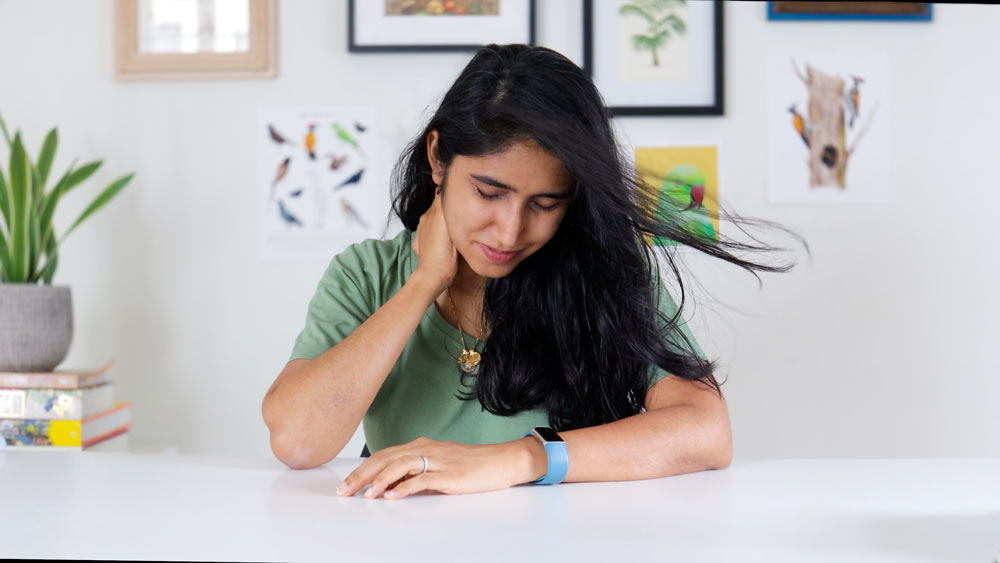Navigating Body Aches as an Artist: A Personal Journey to Recovery

Share
Only a few months into my journey as a Gouache artist, I found myself struggling with persistent shoulder aches. Like many, I initially chose to ignore it, thinking it would miraculously resolve itself. Spoiler alert: it didn't. After a year of enduring discomfort, I finally sought the help of a physiotherapist, which provided some relief but didn't entirely solve the issue.
Last year, I decided it was time I started taking my physical and mental health more seriously. I incorporated regular workouts into my routine and began taking intentional breaks which significantly improved my condition. However, a few weeks ago, severe shoulder and neck aches returned. I decided not to ignore it this time and immediately sought the assistance of a physiotherapist again.
The physiotherapy sessions, though painful, were a necessary step toward releasing the knots that had accumulated over months of daily painting and less-than-ideal posture. To my surprise, sharing my struggles on Instagram revealed a common thread among fellow artists who had faced similar challenges. This inspired me to share some of the lessons I've learned in managing body aches as an artist with the hope that it helps, inspires, or even eases fellow and aspiring artists’ journey a touch! This video covers all of it:
Immediate Changes for Better Ergonomics:
To start I made a few immediate changes to my workspace to help my posture and therefore the pain. These were based on recommendations from my physiotherapists and lots of research. Not all of this might work for you so, I encourage you to do your own research. This will help you understand yourself, your body, and your needs better and take action accordingly.
Use a Monitor and if needed a desk stand: I work a lot on my laptop and I noticed that this meant that I had to bend my neck and hunch a lot. To remedy this, I invested in a monitor and a desk stand so the monitor sits ateye level, along with a keyboard and mouse. This significantly improved my workspace ergonomics.
Consider an Easel or Desk Easel: As I started working on large pieces, I switched to an easel so I could stand and paint. This also prevented the hunching and bending that I would have to do when painting on a desk. If your work involves a lot of detail or is time-consuming, I suggest you invest in a desk easel for better posture while sitting down to paint.
Listen to Your Body: This was the most challenging one for me to practice. I began to try and be more mindful of my body and when I felt even the slightest bit of pain creeping in, I put the pencil or brush down. No more “5 more minutes” for me! It is not easy to resist the urge to work through the pain but having realised that these short-term gains are not worth the long-term problems helps.
Regular breaks and stretches: It’s hard to remember to take breaks at regular intervals. I set a timer for every 30-40 minutes and take a 10-15 minute break. I use this time to hydrate, and do some neck and shoulder stretches. This helps keep my muscles from stiffening up, allowing me to work better.
Enlisting a Personal Trainer: This was a game changer for me. I started working with a personal trainer for muscle strengthening. This has not only helped me get a personalised fitness plan keeping in mind my body and its needs but has also helped me stay motivated and consistent.
Lessons From My Period of Forced Rest
Following a consultation with an orthopaedic specialist, my mindset shifted, providing a glimmer of hope. Unable to work when I desperately wanted to, I faced mental challenges but am now turning things around. Here are some that helped me that I strongly encourage you to try:
Educate Yourself: During my enforced break I had a lot of time to read and research and I stumbled upon this video about posture and ergonomics for artists which I found very insightful. I encourage you to watch such videos and do a lot of reading to familiarise yourself with common health problems faced by people doing similar work so you can learn from them and work towards preventing or managing them. You can even watch my video on the topic.
Get Help: Don’t wait till the pain or discomfort becomes significant to take action. Immediately consult a physical therapist. They will help you understand the root cause of the problem and help you find tools to manage it. This may include making lifestyle changes, upgrading your work set-up, and incorporating regular breaks and exercise into your routine. Everybody is different and till you consult a specialist, you will not be able to do what’s right for you.
Remember, the journey of managing body aches as an artist involves a combination of lifestyle changes, self-awareness, listening to your body, and seeking professional help. Remember, there's always hope, and taking the right steps toward recovery is the key to a sustainable artistic career. If you're facing similar struggles, know that you're not alone, and there's a way to navigate through it. I hope my story inspired you to prioritise your health and take action towards your long-term wellness and successful career as an artist! Watch the video now for all the steps you can take to improve your own situation with chronic pain:
